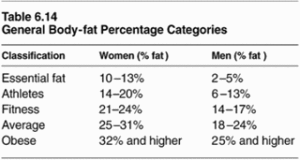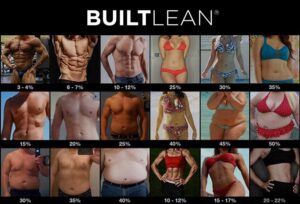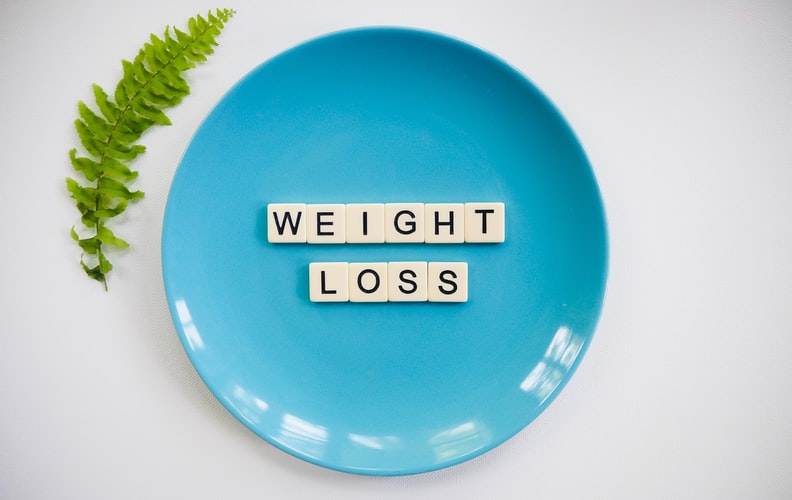If you have a weight loss goal, you might be wondering how to pick the right goal weight.
I’m going to tell you exactly how to pick the right goal weight for yourself in this article. And then I’ll share with you how to make a plan that will get you to that goal weight. I’ll also share how to adjust your goals along the way.
Ready? Let’s do this!
How To Pick A Goal Weight
Choosing a goal weight can feel really arbitrary. Many people I talk to and work with want to “get back to” the weight they were in high school and college because they remember looking and feeling good at that weight. And that’s not a bad place to start. But for most of us, high school and college were years or even decades ago, and the fact is, a lot about your life has changed since then.
Here’s how to pick a more concrete and realistic goal weight for yourself now.
Step 1: Start with a healthy weight range
If you have a lot of weight to lose (10, 20, 50 or more pounds), your first step is learning what a medically healthy weight range is for your body. Doctors use a couple different metrics for “healthy” weight, but the most obvious and common are Body Mass Index (BMI) and body fat percentage.
Body Mass Index (BMI)
BMI compares height to weight and aims to predict risk for metabolic disorders and chronic disease. People who have high BMIs (in the overweight or obese categories) are at higher risk for developing high blood pressure (hypertension), heart disease, diabetes, and certain types of cancer. What’s talked about less is that people with extremely low BMI are also at risk for developing health issues. That’s why it’s important to maintain a healthy BMI within a certain weight range.
According to the National Institute of Health, these are the BMI Categories:
- Underweight = <18.5
- Normal weight = 18.5–24.9
- Overweight = 25–29.9
- Obesity = BMI of 30 or greater
You can calculate your body mass index here: BMI calculator (don’t worry, the link will open in another window)
It’s worth noting that yes, there are problems with BMI. It’s not the end-all-be-all. If you’re an athlete or extremely muscular, you may rank on the “high” side of the BMI scale even if you’re perfectly fit and healthy. But that’s not most people.
Body Fat Percentage
If scale weight tells us how much of you there is (in lbs/kg), body fat percentage is a measure of the composition or quality of your body tissue. Your body is made of bone, muscle, organs, fat, and water.
Having more fat-free mass (muscle, organs, etc) is generally considered healthier than having a high percentage of body fat. Just like BMI, there is a healthy range of body fat; above and below the healthy range, you’re at risk of developing metabolic disorders or chronic diseases.
According to the American Council on Exercise, these are healthy body fat percentages for men and for women:

Essential fat is literally the baseline amount of body fat that is “essential” to supporting your health. As you can see from the chart, men can be healthy at much lower body fat percentages than women. It’s also (generally) easier for men to lose fat, sometimes more quickly than women. This is due to hormones and the fact that female biology prioritizes reproduction over fat loss.
The best (most accurate) way to figure out your body fat percentage is either a DEXA scan, which can be expensive and hard to find in your area, or using body fat calipers, which requires the assistance of someone trained in using calipers, like a registered dietician or personal trainer. The best (most accessible) way to estimate your body fat percentage is to take progress pictures and eye ball your body fat range. You can use the image below to eye ball your current body fat.

BMI And Body Fat Percentage Are Just Starting Points
Neither BMI or body fat percentage are an end-all-be-all for your goal weight for weight loss. You’ll also notice that both healthy BMI and body fat percentages exist on a spectrum. There’s a wide range of what’s considered “healthy.” By starting with BMI and/or body fat levels, you can get an idea of a healthy range for your personal weight loss goals. The next step is personalizing your goal weight.
Step 2: Personalize Your Weight Loss Goal
Look at your current weight and reflect on your own health history. When was the last time you felt really good in your body? If you know what you weighed then, that’s a good starting point for a weight loss goal.
Consider your lifestyle when choosing your goal weight
While it’s possible for most people to get extremely lean, ripped, and shredded, all weight loss comes with trade offs.
Are you willing to sacrifice your daily after dinner treat, family pizza night, or happy hour drinks with your best friends? If not, you definitely do not have to give up those things!
I tell everyone I work with on weight loss goals that I will never expect them to give up pizza, ice cream, chocolate, or alcohol. You can enjoy all of those things in moderation. But you should be aware that in order to keep those foods in your diet, your weight loss may be slower than you’d like or you may not ultimately be able to get down to magazine cover model levels of leanness.
There are certain non-negotiables we all have in our lives that we’re not willing to give up. You should factor those non-negotiables into your weight loss goals.
Speaking personally, I’ve been super lean before, but in order to get lean and stay there, I had to track everything I ate and reduce the “fun” foods in my diet, including cutting out beer. To me, the tradeoff ultimately wasn’t worth it. I’m much happier at a slightly higher weight and body fat percentage because my diet gets to be more flexible.
Consider other factors besides weight when setting your goal
In case you’re coveting an actor or athlete’s physique and wishing to achieve that for yourself, consider the fact that most people paid to look good on camera don’t look swimsuit ready year round (some might, but most don’t). Achieving super-low body fat levels is really hard on your body and requires a near-obsessive focus on training and nutrition.
When choosing a goal weight, consider the trifecta of how you look, how you feel, and how you perform.
How you look
Yes, losing weight will help you look skinnier. But adding weight (muscle) may make you look more fit and healthy. Not everyone needs to lose weight to look better. Sometimes, focusing on adding lean muscle tone can vastly improve how you look in the mirror.
And, you may find that you like how you looked at a certain weight in the past, but don’t like how you look at that weight now, or vice versa. The scale shouldn’t ever be the only measure of your progress, so consider how you actually look in the mirror and in your clothes, too.
How you feel
Weight loss requires being in a calorie deficit (eating less food than your body requires to gain or maintain weight). Being in a calorie deficit means you have less energy for daily activity.
Prolonged periods of dieting can tank your energy levels and mess with your hormones, leaving you constantly tired, negatively impacting your mood, and increasing cravings as your hunger and satiety hormones adapt to your decreased calorie intake. Pay attention to how you feel as you lose weight.
How you perform
I work with many current/former athletes and weekend warriors who hike, ski, snowboard, climb, mountain bike, and otherwise enjoy being active in the outdoors. For myself and my clients, performance is a very important part of their fitness goals.
Since weight loss requires a calorie deficit, it only stands to reason that athletic performance might suffer when dieting. That’s why assessing your workout and recreational performance should be an important consideration on your weight loss journey.
Even if you don’t have a performance goal or a specific fitness goal like doing a pull up or running a faster mile, it’s important to have energy for the things you like to do.
Step 2.5: Set an Intermediate Weight Loss Goal
Okay, so you now have an idea of what a “healthy” weight looks like for you, and you’ve reflected on the last time you were happy with your weight and how you looked and felt about your body. You might have a goal weight in mind by now.
No matter what number you envision, it’s best to set intermediate goals on the way to your ultimate weight loss goal.
Starting with a 5-10 pound weight loss goal will make your journey more manageable. Plus, when you hit that 5-10 pound target, you can take a “diet break” and focus on maintaining your new weight for a while. This will make future fat loss easier from both a physiological and psychological standpoint.
This strategy works really well if you have a history of yo-yo dieting (losing a lot of weight, then gaining it all back). Picking a small weight loss goal and maintaining it is a good way to make sure you don’t put the weight back on again. Your progress will look like a stair-step of loss, maintenance, loss, maintenance, until you reach the weight where you look, feel, and perform your best.
Step 3: Create Your Weight Loss Plan
As mentioned several times above, weight loss comes down to one predominant factor: sustaining a calorie deficit, or eating slightly less food than your body requires to gain or maintain your current weight.
I like to take a “work smarter, not harder” approach to weight loss. Sure, you could eat a severely calorie-restricted diet and lose a lot of weight quickly… but people who take this extreme approach tend to gain back all the weight they lose (and often gain even more weight). This leads to a vicious yo-yo dieting cycle.
A better approach is to eat as much food as possible while still staying in a calorie deficit.
To figure out a starting point for weight loss, take your current weight and multiply it by 10-12.
For example, if you currently weigh 160 lbs, multiply 160 by 10 and by 12: 160×10 = 1600 and 160×12 = 1920.
You should eat between 1600-1920 calories per day in order to lose weight.
Download a food logging app and track everything you eat. My Fitness Pal is probably the most popular, but I actually prefer the Lose It! app because it’s easier to use and just plain looks nicer.
Wondering how much protein, carbs, and fats to eat on your journey to your goal weight? Check out this article.
As you’re tracking your food, weigh yourself daily, first thing in the morning after you use the bathroom and before you eat or drink anything. Don’t worry about daily scale fluctuations. Look for trends over time.
If your average weight is dropping week-to-week, it’s a sign your plan is working. If your average weight isn’t dropping, it’s time to move on to the next step, making adjustments.
Step 4: Making Adjustments on Your Weight Loss Journey
If you set a goal weight and do the calorie calculation above, but you aren’t losing weight after a couple weeks, you may need to make adjustments.
Before making any changes, be honest with yourself about how carefully you’re tracking your food. If you’re eye balling portions, leaving things out of your log, forgetting to track cooking oils, or using generic entries like “PBJ, homemade” you may just need to be more accurate with your tracking.
But if you can honestly say that you’re recording everything as accurately as possible and sticking to your calorie target range, you may need to nudge your calories lower. Cut 100 calories from your target range and use that as a new target for 1-2 weeks. Keep weighing yourself daily and see if your average weight decreases along with the reduction in calories. If not, cut another 100 calories from your target until weight loss resumes.
While calories are the primary driver of weight loss, it’s also important to eat enough protein on a weight loss diet. Check out this article for more information on protein targets.
How will you know you’re “done” and at your goal?
Remember above, how I said that BMI and body fat percentage aren’t an end-all-be-all? And that both measures exist on a spectrum? The same is true about your goal weight.
You may get the idea in your head that X pounds is the “right” weight for you, but once you get there, you might still feel like you have work to do, or you might feel like crap and decide that you’re okay gaining a couple pounds to feel better. Or, you might decide that you’re happy with your weight loss, but realize that you want to get stronger or put on muscle, and those new goals will affect your weight.
The point is, a goal weight is never a firm end point. And because our weight naturally fluctuates on a daily and day-to-day basis, you’ll never hit your goal and stay there permanently.
Using BMI, body fat, and how you look, feel, and perform can help you settle on a number to aim for. Once you reach that number, reevaluate. Are you happy there? Are you happy with the amount of work it takes to stay there, or is it too hard to maintain? Be honest with yourself.
While it’s great to have a goal weight in mind as something to aim for, remember that these things are always in flux.
You’ll never be “done” done.

